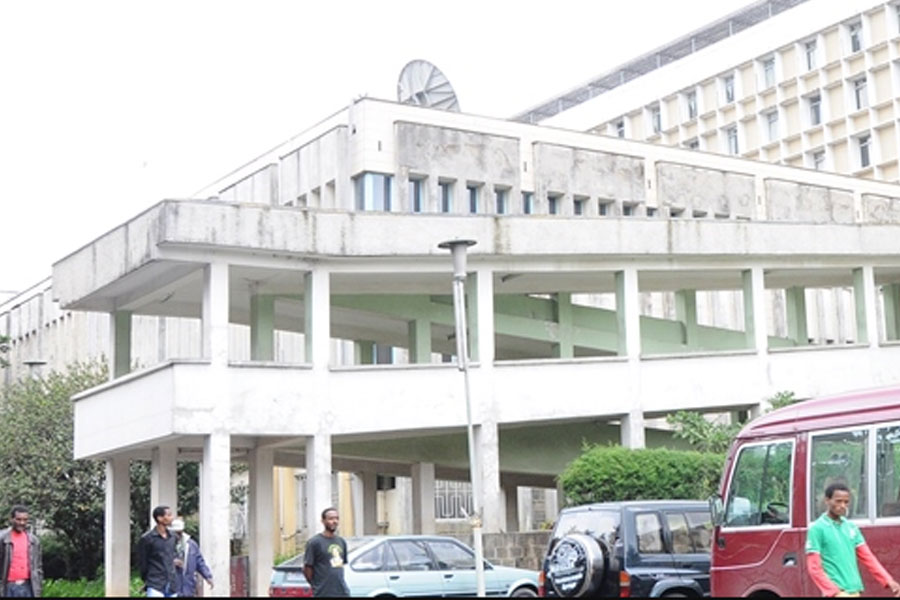
Radar | Nov 03,2024
The National Meteorology Agency is set to install weather systems that will provide real-time information and reports on weather conditions at Hawassa and Kombolcha airports.
The Agency will cover the seven million Birr cost of the Automated Weather Observing System, the tender it announced last week.
This will be the Agency’s second attempt to procure the system after originally floating a tender on October 19, 2018, which was cancelled after only one firm submitted a bid.
“We also had a budget deficit at the time that forced us to cancel the tender,” said the director of Kassa Fekadu, Aviation Meteorology Service at the Agency.
Out of the 22 airports that are currently operational and four that are under construction in Ethiopia, only the Addis Abeba, Meqelle, Bahir Dar, Dire Dawa and Gonder airports currently use the system, which provides real-time information and reports on air temperature, atmospheric pressure, humidity, wind direction and speed.
The Hawassa and Kombolcha airports, among the 22 operational domestic airports, were chosen as the next to receive the system, which is expected to become operational in July, because of the large number of passengers they host, according to Kassa.
The Semera and Bale Robe airports will get the automated weather system next year, according to him.
“Thus far, the weather system of each hour is registered manually,” Kassa said. “The system, beyond minimising human intervention, will increase accuracy and timeliness of the forecasts.”
The Ethiopian Civil Aviation Authority uses two types of weather information gathering systems, the Automatic Weather System, which is used to provide information on speed and direction, while the Automatic Weather Observing System is used for landing and take off by feeding weather information to the pilots, according to Animut Lemma, communications director at the Civil Aviation Authority.
Jimma, Jigjiga, Arbaminch, Gambella, Assosa and Lalibela airports use the Automatic Weather System. Dire Dawa, Addis Abeba, Meqelle, Bahir Dar and Gonder use automatic weather observing system. The remaining airports operate manually.
After the installation, the Agency's Aviation Meteorology Service will be responsible for operating and maintaining the system. Established almost four decades ago, the Agency has more than 1,200 conventional stations, 25 automatic stations and upper-air observations. It also receives satellite images every fifteen minutes from the MSG2 satellite launched by the EU.
An expert applauds the installation of the system.
"The system, besides collecting real-time weather conditions, helps to make air transport safer," said Woldeamlak Bewket (Prof.), a lecturer at Addis Abeba University’s Department of Geography & Environmental Studies. “Airports that do not have the system should be able to follow suit.”
Nonetheless, in Ethiopia, changes in weather conditions are not as intense as they are in other countries, except in the rainy season, which can make takeoff and landing difficult, according to Woldeamlak.
PUBLISHED ON
Jan 26,2019 [ VOL
19 , NO
978]

Radar | Nov 03,2024

Fortune News | Mar 16,2019

Radar | Aug 23,2025

Fortune News | Jun 23,2019

Fortune News | Oct 31,2020

Fortune News | Mar 09,2019

Fortune News | Apr 26,2019

Commentaries | Feb 10,2024

Fortune News | Apr 27,2025

Fortune News | Aug 10,2019

Dec 22 , 2024 . By TIZITA SHEWAFERAW
Charged with transforming colossal state-owned enterprises into modern and competitiv...

Aug 18 , 2024 . By AKSAH ITALO
Although predictable Yonas Zerihun's job in the ride-hailing service is not immune to...

Jul 28 , 2024 . By TIZITA SHEWAFERAW
Unhabitual, perhaps too many, Samuel Gebreyohannes, 38, used to occasionally enjoy a couple of beers at breakfast. However, he recently swit...

Jul 13 , 2024 . By AKSAH ITALO
Investors who rely on tractors, trucks, and field vehicles for commuting, transporting commodities, and f...

Oct 18 , 2025
The political establishment, notably the ruling party and its top brass, has become p...

Oct 11 , 2025
Ladislas Farago, a roving Associated Press (AP) correspondent, arrived in Ethiopia in...

Oct 4 , 2025
Eyob Tekalegn (PhD) had been in the Governor's chair for only weeks when, on Septembe...

Sep 27 , 2025
Four years into an experiment with “shock therapy” in education, the national moo...